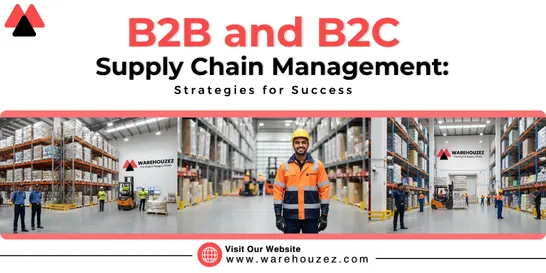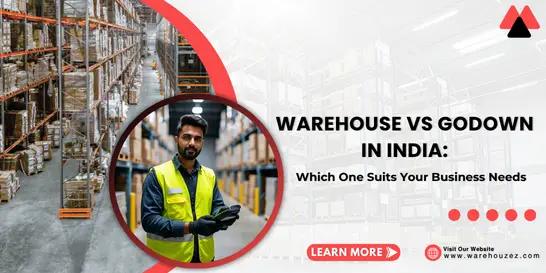3PL vs 4PL Right Model for Supply Chain
3PL vs 4PL: Which Model is Right for Your Supply Chain?
Well, it’s no secret that every supply chain has its breaking point. For some, it’s the high cost of managing warehouses. For others, it’s inventory inaccuracy, missed deadlines, and poor visibility. The good news? Both 3PL and 4PL providers can solve these problems but in very different ways.
If you’re not very much sure which model fits your business the best, this blog post will guide you. We’ll explain what 3PL and 4PL mean, how they differ, and how to choose the one that aligns with your supply chain needs. So, let's get started.
What Is 3PL in Logistics and Supply Chain Management?
Third-party logistics (3PL) means outsourcing warehousing, transportation, and order fulfillment to an external provider who is an expert in these tasks.
A 3PL provider can be thought of as an extension, value-addition to your business. They take care of supply chain operations like:
- Storing products in a 3PL warehouse
- Picking, packaging, and shipping orders
- Managing transportation with a focus on route optimization
- Handling returns and reverse logistics
Thus, a 3PL is your partner in growth. They focus on execution, while you can concentrate on product development, sales, and marketing.
Top Benefits of Using a 3PL Provider
A 3PL company adds value in multiple ways. Let’s list some of them.
Cost Savings: Shared, on-demand warehousing and transportation networks reduce costs.
Scalability: You can easily expand or down your capacity during peak or off seasons.
Expertise: 3PLs have in-depth knowledge and well-established carrier, distribution networks.
Faster Deliveries: Widespread network of warehouses in India enable quicker order fulfillment.
Technology: Many 3PLs use tech tools like barcode scanners, RFID, and warehouse management systems(WMS) for real-time visibility.
For example, an e-commerce and FMCG brand may use a 3PL warehouse in multiple cities to cut delivery times and meet customer expectations.
What Is 4PL in Logistics and Supply Chain Management?
Fourth-party logistics (4PL) goes a step beyond. A 4PL provider acts as the single point of contact to manage and optimize the entire supply chain.
Unlike 3PLs that focus solely on operations, 4PLs focus on strategy and seamless integration. They most often manage multiple 3PLs, transportation carriers, and technology platforms under one umbrella.
A 4PL provider supports:
- End-to-end supply chain management
- Greater control and visibility
- Informed, data-driven decision-making
- Strategic consulting for success
In short, a 4PL functions more like a supply chain consultant than just an operator.
Top Benefits of Using a 4PL Provider
Now, let’s takes see why businesses actually choose 4PLs these days:
Holistic Supply Chain View: Complete visibility across all supply partners (suppliers, manufacturers, distributors, 3PL logistics providers).
Single Point of Contact: No need to manage multiple providers separately.
Advanced Analytics: 4PLs use the latest data insights to improve demand forecasting and inventory planning.
Efficiency at Scale: Ideal for businesses with complex or global supply chains.
Customization: Solutions well-suited and tailored to your industry and growth stage.
For example, a global fashion and lifestyle retailer may use a 4PL warehouse network to manage inventory across regions and streamline vendor relationships.
3PL vs 4PL: Major Differences Explained
Here’s a side-by-side look:
Role: 3PL primarily deals with execution of supply chain activities like procurement, receiving, storage, as well as shipping; 4PL focuses on strategic planning and tech integration.
Control: 3PL takes care of specific tasks; 4PL prominently focuses on strategic planning and tech integration.
Focus: 3PL is operational; 4PL is strategic.
Technology: 3PL mainly uses WMS software; 4PL integrates multiple systems such as automation, AI, IoT, RFID, TMS, and WMS for visibility.
Who Needs It: 3PL is best for businesses seeking cost-effective logistics solutions; 4PL is for those needing end-to-end supply chain optimization.
When Should You Choose a 3PL Provider?
A 3PL provider is the perfect fit when:
- Your business is growing, but it has not yet reached the global level.
- You want faster deliveries through a 3PL warehouse network.
- You need expertise in warehousing, e-commerce fulfillment, and transportation.
- You want to reduce logistics costs without building any extra infrastructure.
- You need flexibility, especially during the times of seasonal peaks.
Businesses are in their startup stage or mid-sized companies often entrust 3PLs with a part or all of their supply chain.
When Should You Choose a 4PL Provider?
A 4PL provider is the right fit when:
- Your supply chain is complex or international.
- You work with multiple partners, 3PLs, and carriers.
- You want centralized visibility and complete control.
- You need consulting and data-driven insights.
- You’re looking to transform logistics into a competitive advantage.
Large enterprises with globalized operations often use 4PL providers to integrate and optimize their supply chains.
How to Decide Which Model Fits Your Supply Chain
The decision depends on your operational needs, goals, and challenges.
- Choose a 3PL if you want execution support at lower costs.
- Go for a 4PL if your priorities are strategy, visibility, and end-to-end control.
- Some companies even start with 3PL and later upgrade to 4PL as and when required.
Here’s an additional tip: Review your supply chain challenges today. See whether they are more operational or strategic? This will point you in the right direction.
Concluding Remarks
When it comes to 3PL vs 4PL, there is one thing to keep in mind. This question absolutely has no one-size-fits-all answer. Both models bring unique strengths to the table. A 3PL provider gives the efficiency and flexibility to handle operations. A 4PL provider offers a bigger picture, helping you transform supply chain management into a strategic advantage.
The best choice fundamentally depends on where your business stands today and where you want it to go tomorrow. Choosing wisely can make a world of difference. So, from struggling with bottlenecks, you go to building a supply chain that drives growth.
FAQs
Q1. What is the main difference between 3PL and 4PL?
A 3PL manages operations like warehousing and distribution. A 4PL makes sure to oversee the entire supply chain and integrate multiple providers.
Q2. Can small businesses use a 4PL provider?
Yes, why not, but it’s usually better for larger businesses. Small businesses often start with a 3PL for cost savings and flexibility.
Q3. Do 3PL providers also offer technology solutions?
Yes. Many 3PL providers use advanced WMS and TMS to track inventory and shipments.
Q4. Is it possible to use both 3PL and 4PL at the same time?
Yes. A 4PL provider can manage multiple 3PLs on your behalf, giving you the advantage of centralized control.
Q5. Which is more cost-effective: 3PL or 4PL?
3PL is usually more cost-effective for small to mid-sized businesses. 4PL may cost more but offers greater efficiency and strategic value for large-scale operations.



